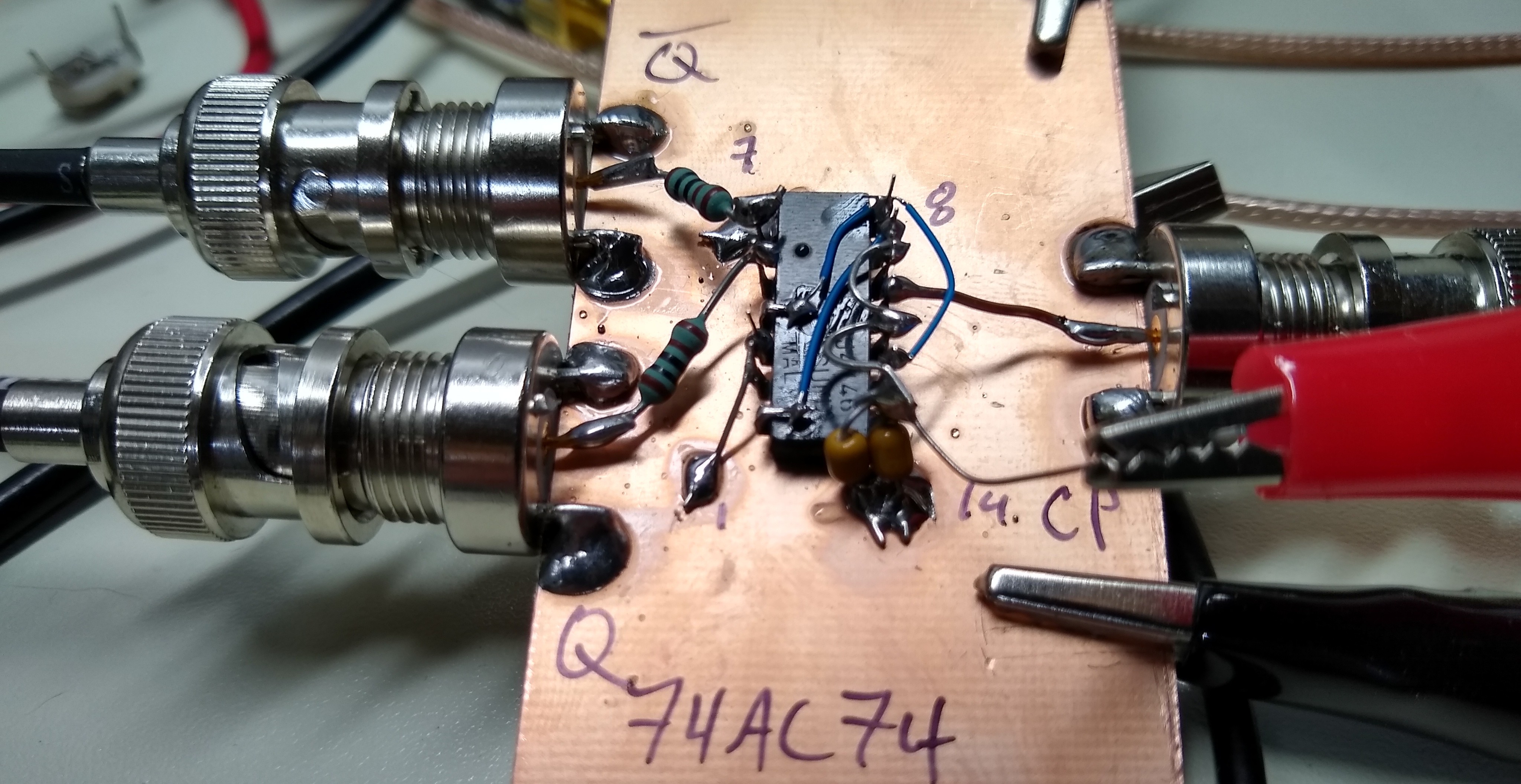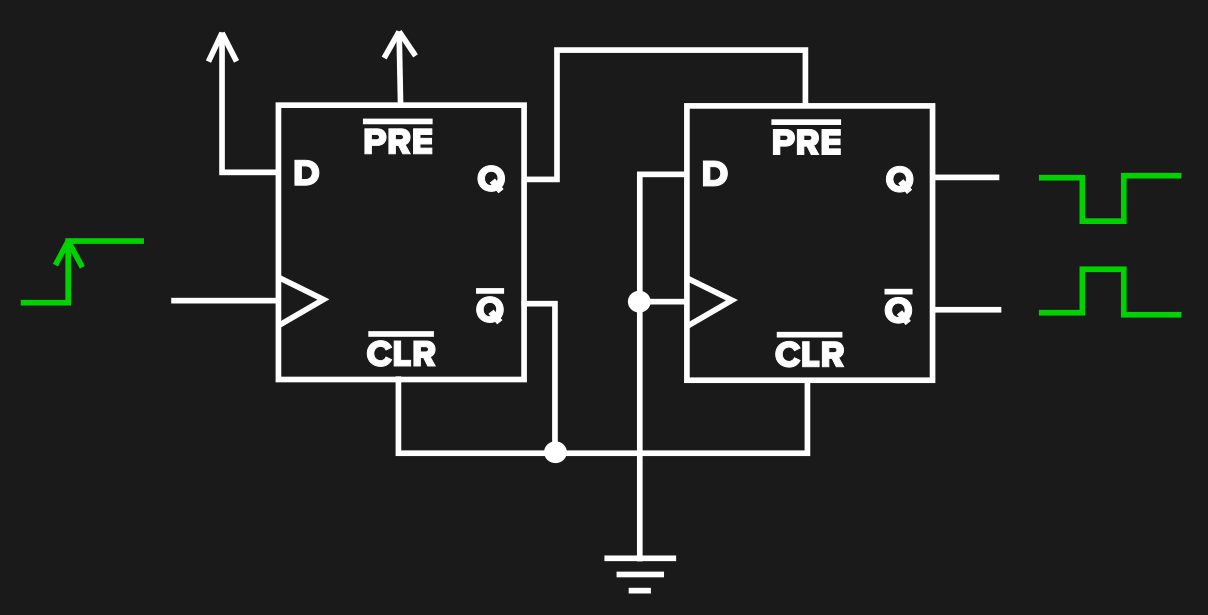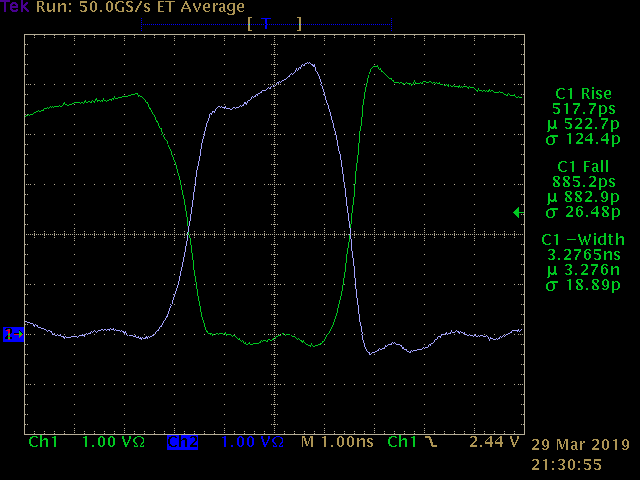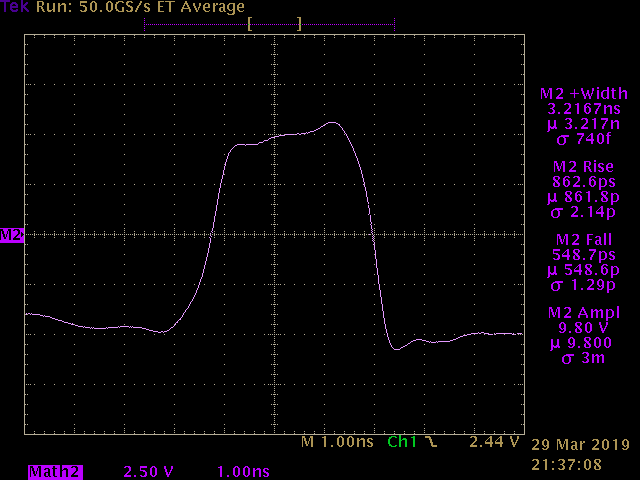I had looked at the 74xx74 as a possible differential-output generator before, but the fact that it's a flip-flop complicates matters. I finally came up with a way to do it, though. A fairly simple circuit using one flip flop creates short (3.2 ns) pulses from each input edge.

The first flip-flop does all the work. The data line is tied high, so on the rising clock edge, the Q output goes high and Qbar goes low. Qbar is connected back to the CLRbar input, which resets the flip flop as soon as it has been set. The output from this flip flop is a differential pulse, but the Qbar output is slightly loaded. Because I had another flip-flop in the package, I added it as a kind of buffer on the outputs. The two outputs from the second flop should be more symmetrical.

The outputs look OK for the kind of nonsense I'm trying here. One goes high and one goes low for around 3.2 ns.

More interesting is the differential signal, estimated here by oscilloscope trace math.

The differential pulse has an amplitude of around 9.8 V (2x the 5 V supply), with a rise time of around 900 ps and a fall time around 550 ps. The width at the 50% threshold is 3.2 ns.
The pulse width probably depends on voltage and temperature, and I'd expect a lot of part-to-part variation. But if you were driving a track-and-hold sampler where only the edges matter, then this should be fine. It's not the ultimate in speed, at least with the 74AC version, but it would probably have faster edges if built with 74LVC parts. I'm going to have to try it now.
The nice thing about this solution over the 74LVC2G157 I looked at before is that it takes care of creating a relatively short pulse for you. This could simplify things a bit - at least for some sampling topologies.
If you were to use this to drive a diode sampling gate, you'd want to sample on the falling edge because it's almost twice as fast.
 Ted Yapo
Ted Yapo
Discussions
Become a Hackaday.io Member
Create an account to leave a comment. Already have an account? Log In.